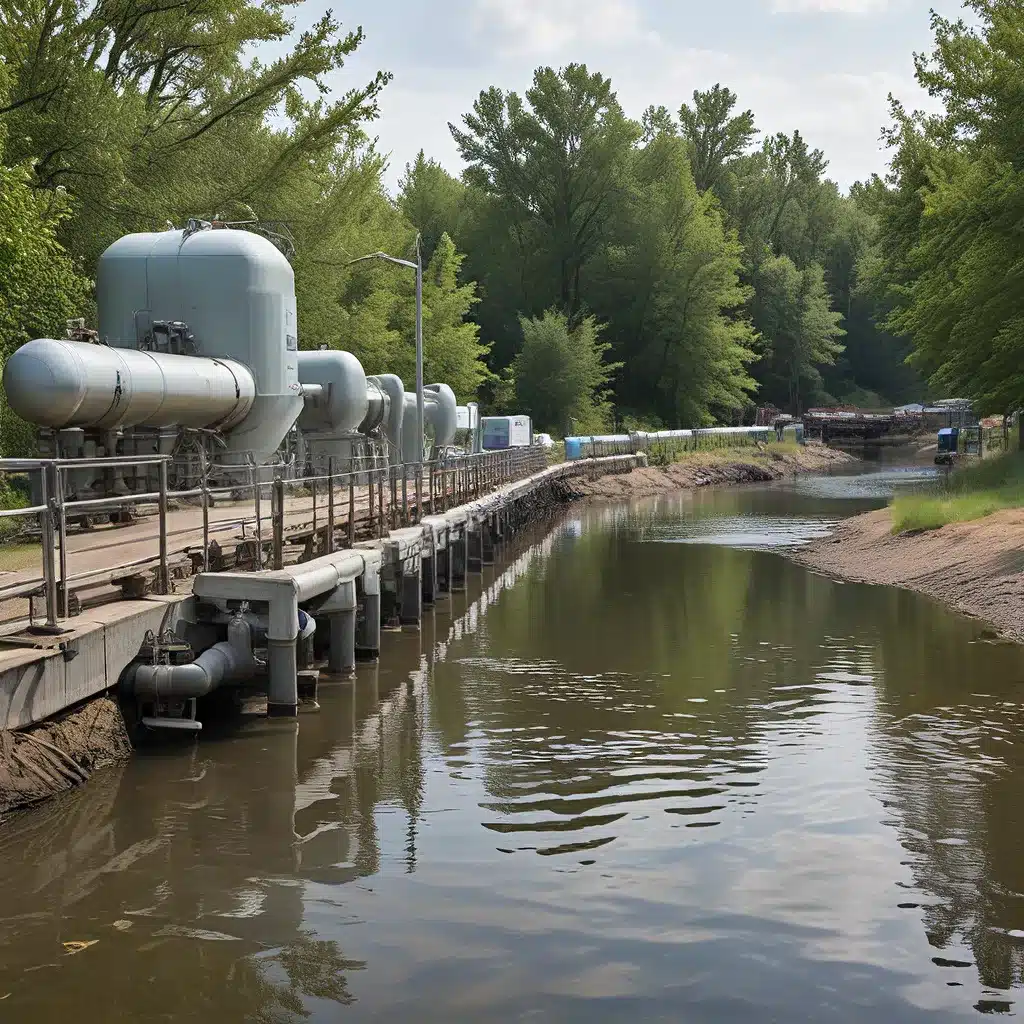
As a water treatment professional, I’ve seen firsthand the critical importance of emergency preparedness. Our aquatic frontlines – the systems and infrastructure that purify and distribute the water we rely on every day – are the unsung heroes of our communities, quietly working around the clock to keep the taps flowing. But what happens when disaster strikes?
Weathering the Storm: Preparing for the Unpredictable
When the skies darken and the floodwaters rise, our water treatment facilities become the first line of defense. Environmental Technology and Management graduates like me are trained to respond, armed with the knowledge and skills to tackle even the most daunting challenges.
I’ll never forget the time a major hurricane hit our region. The winds howled, the rain pounded, and the power flickered ominously. But our team was ready. We had meticulously planned for this scenario, running drills and stress-testing our systems to the breaking point. When the flood waters started to rise, we sprang into action, deploying backup generators, activating emergency protocols, and rallying the troops.
It was a nail-biting few days, I’ll admit. But thanks to our training and preparation, we were able to maintain operations, ensuring a steady supply of clean, safe water for our community. As the floodwaters receded and the sun peeked out from the clouds, I couldn’t help but feel a sense of pride in the work we had done.
Building Resilience: Lessons from the Frontlines
The truth is, emergency preparedness is not just a nice-to-have for water treatment facilities – it’s an absolute necessity. Forestry and Environmental Resources graduate Norman Urbanek knows this all too well. He’s seen firsthand the devastating impact that natural disasters can have on water infrastructure, and he’s dedicated his career to helping facilities like ours become more resilient.
“It’s not just about having a plan in place,” Norman explains. “It’s about building a culture of preparedness, where everyone on the team is invested in the process and ready to spring into action at a moment’s notice.”
One of the key strategies Norman advocates is cross-training. By ensuring that multiple team members are proficient in a variety of essential skills, from water quality testing to emergency repair, you create a more robust and adaptable workforce. When disaster strikes, you don’t have to rely on a single point of failure – everyone can pitch in and do their part.
Another critical component is ongoing training and drills. “You can’t just dust off the emergency plan when the storm is on the horizon,” Norman warns. “It needs to be a living, breathing document that’s constantly being updated and refined.”
Navigating the Regulatory Landscape
Of course, emergency preparedness in the water treatment industry is not just about technical know-how – it’s also about navigating a complex web of regulations and guidelines. **Jasmine Neverson, a graduate of the Environmental Technology and Management program, knows this all too well.
“The regulatory environment is constantly evolving, and it can be a real challenge to keep up,” she explains. “But it’s crucial that we stay on top of the latest requirements, whether it’s the Safe Drinking Water Act, the Clean Water Act, or the Hazardous Waste Operations and Emergency Response (HAZWOPER) standard.”
Jasmine and her team have developed a comprehensive compliance tracking system, complete with regular audits and training sessions. “It’s not enough to just have the policies and procedures in place,” she says. “You’ve got to make sure everyone on the team is up to speed and ready to put them into action.”
Embracing Innovation and Technology
As the challenges facing the water treatment industry continue to evolve, it’s more important than ever to stay on the cutting edge of innovation and technology. From real-time water quality monitoring to advanced treatment systems, there’s a wealth of tools and techniques that can help us better prepare for and respond to emergencies.
One area that’s particularly exciting is the use of remote sensing and data analytics. By leveraging satellite imagery, drone technology, and advanced analytics, we can get a much clearer picture of the threats facing our water systems – from looming storm systems to potential contamination sources. This allows us to proactively plan and allocate resources, rather than just reacting to crises as they unfold.
Of course, technology is only as powerful as the people who wield it. That’s why it’s so important to invest in ongoing training and development for our teams. By empowering our employees with the latest tools and techniques, we can build a more agile and responsive workforce – one that’s ready to tackle any challenge that comes our way.
The Road Ahead: Embracing the Uncertainty
As I reflect on the challenges we’ve faced and the victories we’ve achieved, I can’t help but feel a deep sense of admiration for the water treatment professionals who are on the frontlines of environmental protection. Environmental Technology and Management graduates like myself are part of a growing army of highly-trained, passionate individuals who are committed to safeguarding our aquatic resources.
But the road ahead is far from certain. As the impacts of climate change continue to intensify, we can expect to see more frequent and severe weather events, as well as new and emerging threats to our water systems. It’s a daunting prospect, to be sure, but I’m confident that our industry is up to the challenge.
By embracing innovation, fostering a culture of preparedness, and continuing to hone our skills, we can ensure that our water treatment facilities remain resilient and adaptable in the face of any crisis. And who knows – maybe one day, the unsung heroes of the water treatment industry will finally get the recognition they deserve.
Until then, we’ll keep doing what we do best: safeguarding our aquatic frontlines, one emergency at a time.


